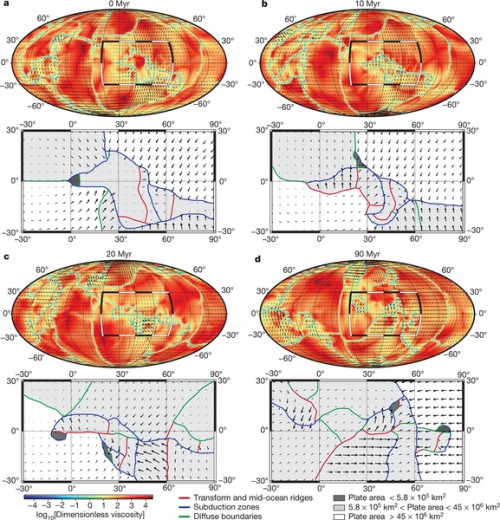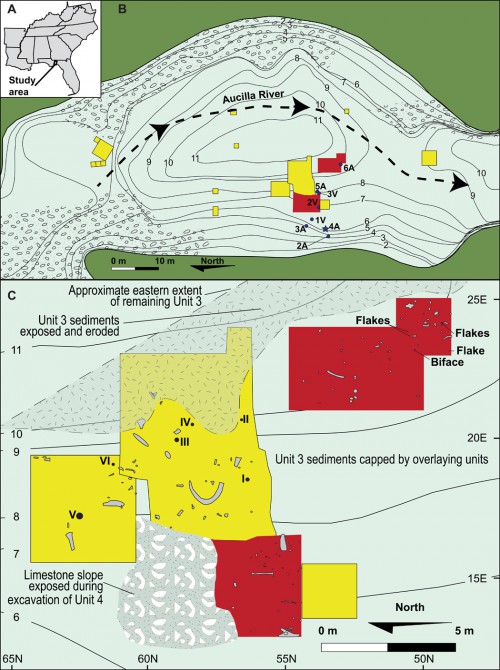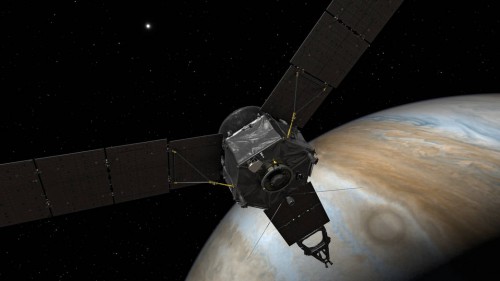This week, Nature has an article on the reconstruction of global tectonics during the past 200 million years.

a–c, Maps are separated by 10 Myr. The shapes of the large plates do not change much, whereas the adjustment of the small plates evolves quickly. d, 90 Myr after the first snapshot (a), the distribution of the large plates and smaller plates has evolved substantially. In a–d, the top panels show the viscosity of the mantle (colour scale); the bottom panels show the different boundary types (coloured lines) and plate sizes (shading) within the boxed regions in the top panels (which focus on longitudes between −30° and 90° and latitudes between −30° and 30°). The arrows indicate the direction and magnitude (represented by arrow length) of the mantle flow.
In Science, we can read about a thorough analysis of a site where a mastodon was butchered by North American hunter-gatherers 14,550 years ago.

(A) Location of Page-Ladson in northwestern Florida. (B) Map of the Page-Ladson underwater excavations, showing the entire sinkhole and previous excavation areas, as well as excavation areas and sediment cores reported in this paper. Core 4A is marked with a blue star. Other cores are marked with blue circles. Previous excavations are marked with yellow. Our excavations are marked with red. Contours are in meters below datum. (C) Detailed map displaying the location of bones (gray), drawn to scale, and artifacts (black) recovered from geological Units 3a to 3c and 4a to 4b
And of course, the big news, scientists have put a probe in orbit around Jupiter.
Meanwhile, in Kentucky…




